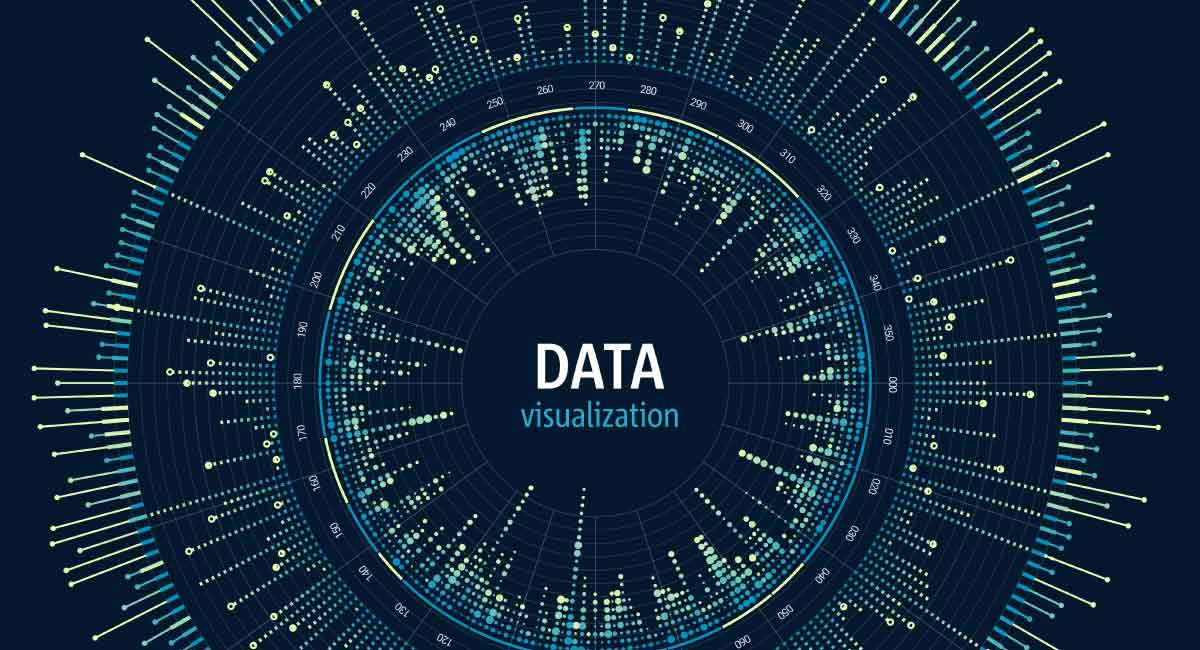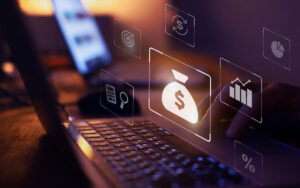How do you transform endless rows of data into a story that can drive decisions and inspire action? Data visualization is the answer. In our data-driven world, converting complex data sets into intuitive, visual formats is essential for uncovering insights and making informed decisions.
This blog answers the high-level question: “What is data visualization?” and discusses its importance, various categories, techniques, and practical applications. We’ll explore how visualizing data can turn raw numbers into powerful narratives that inform, engage, and persuade. Those looking to master this skill and advance their data science career should consider enrolling in a comprehensive data science bootcamp.
So, What is Data Visualization?
Data visualization is the graphical representation of information and data. Using visual elements like charts, graphs, and maps, data visualization tools provide an accessible way to see and understand trends, outliers, and patterns in data. This visual context helps users understand the data’s insights and make data-driven decisions more effectively. It’s a powerful tool for exploratory data analysis and conveying findings to others.
Data visualization involves transforming raw data into visual formats that reveal patterns, trends, and correlations. This transformation process can range from simple static charts to highly interactive and complex visualizations. The goal is to make the data more understandable, insightful, and actionable. Effective data visualization leverages visual perception principles to present data in a way that is both aesthetically pleasing and informative.
It is not just about creating pretty pictures but about creating meaningful representations that can tell a story or answer a question. This process involves understanding the audience, selecting the appropriate visualization techniques, and presenting the data in a way that aligns with the intended message. For instance, a bar chart might be used to compare sales figures across different regions, while a line chart could illustrate trends in stock prices over time.
Also Read: Technology at Work: Data Science in Finance
Why is Data Visualization Important?
Data visualization is essential because it transforms complex data into clear and actionable insights. Converting raw numbers into visual formats allows for quick comprehension and informed decision-making.
Here are some key reasons why data visualization is so crucial.
- Unlocking the narrative: Data visualization helps uncover the story hidden within data, allowing decision-makers to grasp complex concepts and identify new patterns.
- Effective communication: It plays a vital role in presenting data findings clearly and concisely, ensuring that the message is easily understood.
- Handling big data: Visualization tools enable data scientists and analysts to interpret large data sets quickly and efficiently, driving better business strategies and operations.
- Immediate understanding: Humans are inherently visual creatures, and our brains process visual information more effectively than text or numbers alone. Visual representations allow us to quickly identify trends, spot outliers, and understand relationships within the data.
- Essential for quick decision-making: This immediate comprehension is particularly valuable in fast-paced environments where quick decision-making is crucial.
- Broadening audience reach: Data visualization makes complex data accessible and understandable to a broader audience, including business executives, policymakers, and laypersons.
- Democratizing data: By making data more accessible, visualization empowers more people to engage with and make informed decisions based on data.
What is Data Visualization? Big Data Visualization Categories
Big data visualization involves handling vast and complex data sets, often requiring advanced tools and techniques. It can be categorized into three main types:
Interactive Visualization
This allows users to engage with the data dynamically. Interactive dashboards and reports enable users to manipulate data and uncover insights through various filters and controls. Tools like Tableau and Power BI are commonly used to create interactive visualizations that allow users to drill down into data, explore different perspectives, and gain deeper insights.
Real-time Visualization
This involves visualizing data as it is collected. It’s particularly useful for monitoring live data streams, such as social media feeds, sensor data, or financial market movements. Real-time visualization tools can provide up-to-the-minute insights, enabling quick responses to changing conditions. For example, financial traders use real-time visualization to monitor market movements and make timely investment decisions.
3D Visualization
3D visualization can provide additional depth and clarity for particularly complex data sets. It’s often used in medical imaging, geospatial analysis, and engineering. 3D visualizations can help to understand complex structures and relationships that might be difficult to interpret in two dimensions. For example, 3D visualizations of MRI or CT scans in medical imaging can help doctors diagnose and plan treatments more effectively.
Also Read: The Top Data Science Interview Questions for 2024
Top Data Visualization Techniques
Numerous techniques are available for data visualization, each serving different purposes and data types. Here are some of the top ones.
Bar Charts and Column Charts
These compare different categories or track changes over time. They are simple yet effective for presenting categorical data. Bar charts can be used to compare sales figures across various regions, while column charts can show the change in sales over different quarters.
Line Charts
Line charts connect individual data points to show continuous data, which is ideal for showing trends over time. They are often used to illustrate trends in stock prices, website traffic, or temperature changes over time. Line charts can help to identify patterns and predict future trends.
Pie Charts and Donut Charts
These charts show the proportions of a whole. While popular, they should be used carefully as they can sometimes be misleading. Pie charts are best used for showing simple proportions, such as the market share of different companies. Donut charts are similar but have a central hole, making them visually distinct.
Heat Maps
These visualize data through color variations. They effectively show data density and variations across different categories or geographical areas. Heat maps are often used in fields like marketing to show customer activity across various regions or in scientific research to show gene expression levels.
Scatter Plots
These display values for typically two variables for a data set, showing how much one variable is affected by another. Scatter plots help identify correlations and relationships between variables. For example, a scatter plot might show the relationship between advertising spend and sales revenue.
Bubble Charts
Similar to scatter plots, but with an added data dimension represented by the bubble size. Bubble charts can show the relationship between three variables, with the size of the bubble representing the third variable. They are often used in business to show the performance of different products or regions.
Geospatial Maps
Geospatial maps visualize data related to geographical locations and are useful in fields like meteorology, urban planning, and logistics. They can show the distribution of phenomena across different regions, such as the spread of diseases, population density, or delivery routes.
Also Read: Big Data and Analytics: Unlocking the Future
What is Data Visualization? Use Cases and Applications
Data visualization is used across various industries and applications, enhancing the ability to understand and utilize data effectively:
Business Intelligence
Companies use data visualization for performance tracking, market analysis, and strategic planning. Tableau and Power BI are popular for creating interactive dashboards and reports. These tools enable businesses to monitor key performance indicators (KPIs), track sales performance, and analyze real-time market trends. For example, a retail company might use a dashboard to monitor daily sales figures, inventory levels, and customer feedback.
Healthcare
Visualization helps understand patient data, track disease outbreaks, and optimize healthcare operations. For example, heat maps can show the spread of diseases geographically, allowing public health officials to allocate resources effectively. In hospitals, data visualization can be used to monitor patient vitals, track the progress of treatments, and identify potential complications early.
Finance
In finance, visualization aids in tracking stock market trends, risk management, and portfolio analysis. Real-time visualization tools are crucial for making timely investment decisions. For example, traders use real-time charts to monitor stock prices, identify trends, and execute trades. Risk managers use visualizations to assess portfolios’ risk exposure and develop mitigation strategies.
Marketing
Marketers use visualization to analyze consumer behavior, campaign performance, and market trends. Interactive dashboards can show the impact of marketing efforts in real time. For example, a marketing team might use a dashboard to track the performance of different campaigns, analyze customer engagement, and optimize marketing strategies based on data insights.
Education
Data visualization improves teaching methods, tracks student performance, and research trends. Educational institutions use visual tools to analyze and present data on student outcomes. For example, schools use dashboards to monitor student attendance, track academic performance, and identify students who need additional support. Researchers use data visualization to analyze education trends and develop evidence-based policies.
Scientific Research
Scientists use data visualization to interpret complex data sets from experiments and simulations. 3D visualizations can provide in-depth insights into scientific phenomena. For example, climate scientists use visualizations to analyze data from climate models, track changes in temperature and precipitation patterns, and predict future climate scenarios. Biologists use visualizations to analyze gene expression data and understand diseases’ underlying mechanisms.
Government and Public Policy
Governments use data visualization to analyze population data, economic indicators, and public health information. This aids in policy-making and public communication. For example, governments use visualizations to track the spread of COVID-19, monitor economic performance, and allocate resources. Policymakers use data visualization to analyze different policies’ impact and communicate findings to the public.
Also Read: Five Outstanding Data Visualization Examples for Marketing
Building Data Science and Data Visualization Skills
Data visualization is more than just a way to present data; it’s a crucial tool for making sense of complex information and driving informed decision-making across various sectors. Aspiring data scientists and analysts should prioritize gaining data visualization expertise to unlock their data’s full potential. Enrolling in a comprehensive data science program can provide the necessary skills and knowledge to excel in this field.
As data continues to grow in volume and complexity, the importance of data visualization will only increase, making it a vital skill for the future. By harnessing the power of data visualization, individuals and organizations can turn data into actionable insights, drive better decisions, and achieve their goals. Whether you’re working in business, healthcare, finance, education, scientific research, or government, data visualization can help you understand and leverage the power of data.
You might also like to read:
Data Science Bootcamps vs. Traditional Degrees: Which Learning Path to Choose?
Data Scientist vs. Machine Learning Engineer
What is A/B Testing in Data Science?
What is Natural Language Generation in Data Science, and Why Does It Matter?
What is Exploratory Data Analysis? Types, Tools, Importance, etc.






